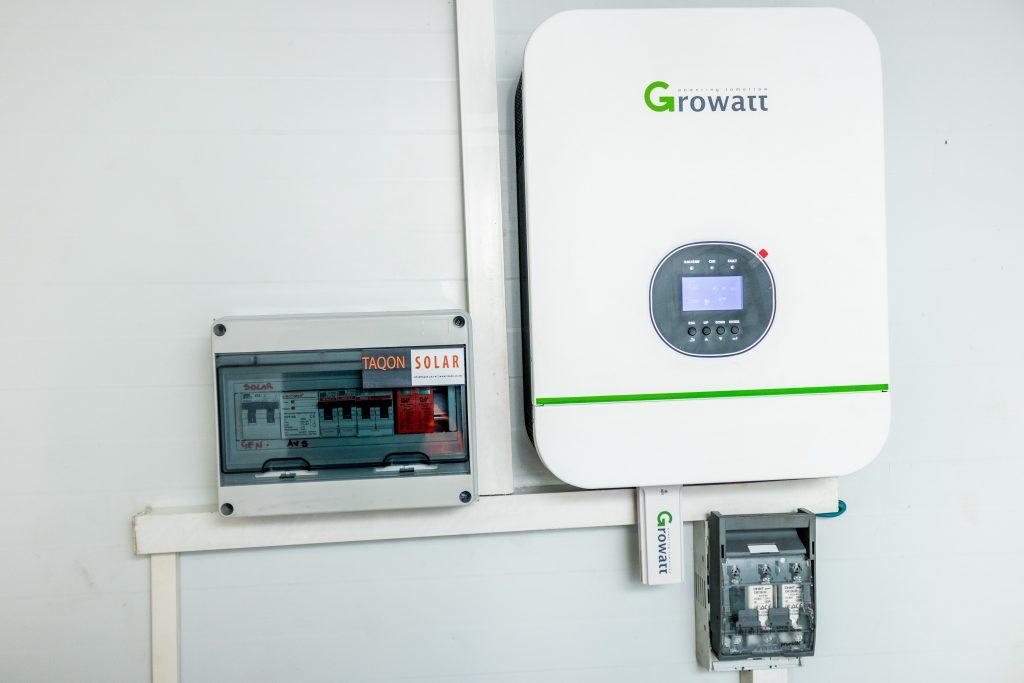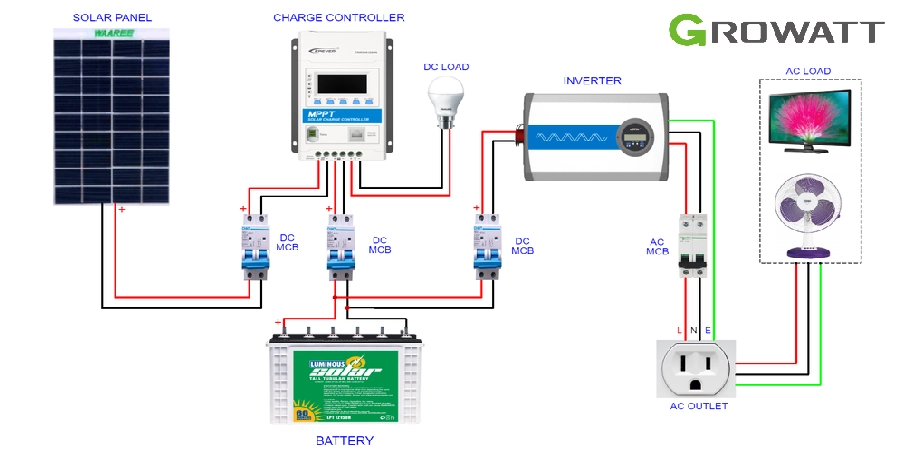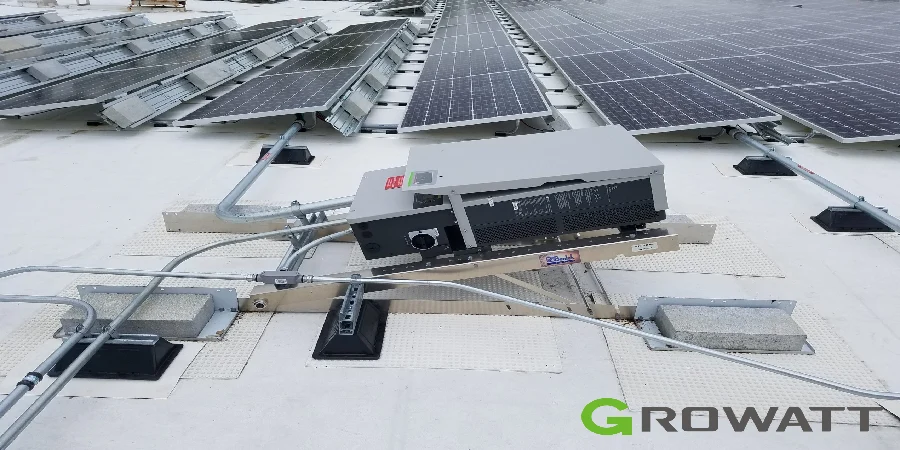Installing a solar inverter for a DIY solar panel system can be an exciting and rewarding project, especially if you want to harness renewable energy for your home. A solar inverter is an essential component that converts the DC (Direct Current) power generated by solar panels into AC (Alternating Current) power, which is used by household appliances. By following this detailed step-by-step guide, you’ll be able to install the system safely and efficiently.
However, it’s crucial to ensure that you follow each step carefully, as working with electrical systems can be hazardous without the proper knowledge. This guide will take you through the entire process, from preparing your system to final testing.
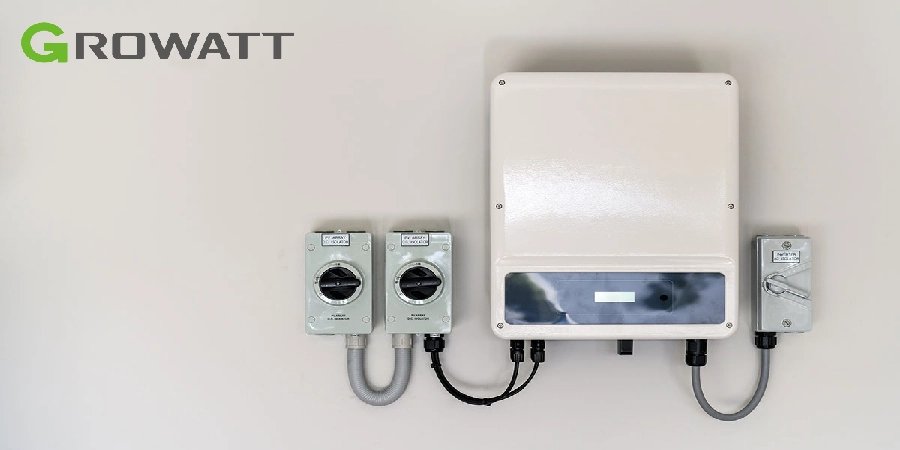
| Step | Action | Details |
|---|---|---|
| 1 | Preparation and Safety | – Ensure you have all tools and safety equipment. – Disconnect power sources. |
| 2 | Mounting the Inverter | – Select a suitable location. – Secure the inverter with mounting brackets. |
| 3 | Wiring Solar Panels to Inverter | – Connect positive/negative DC wires. – Install DC disconnect switch. |
| 4 | AC Wiring | – Turn off AC breaker. – Connect AC output to the electrical panel. – Install AC breaker. |
| 5 | Grounding | – Connect the grounding wire from the inverter to the building’s ground system. |
| 6 | Testing | – Double-check connections. – Turn on the DC disconnect and inverter. – Test with appliances. |
Step 1: Preparation and Safety Measures
Before diving into the installation, it’s important to prepare and take safety precautions to prevent any electrical accidents.
Tools and Materials You’ll Need:
-
Solar inverter (choose one compatible with your system size)
-
Solar panels (already installed)
-
Mounting brackets for the inverter
-
DC cables for connecting the panels to the inverter
-
AC wiring for connecting the inverter to your home’s electrical panel
-
Electrical tools: Screwdrivers, wire cutters, pliers, multimeter, etc.
-
Circuit breakers: DC disconnect, AC breaker
-
Grounding wire
-
Safety equipment: Gloves, glasses, and insulated tools
Safety First:
-
Disconnect power sources before starting the installation process.
-
Make sure to wear protective gloves and safety glasses when working with electrical components.
-
Ensure that your workspace is dry, and avoid working in wet conditions.
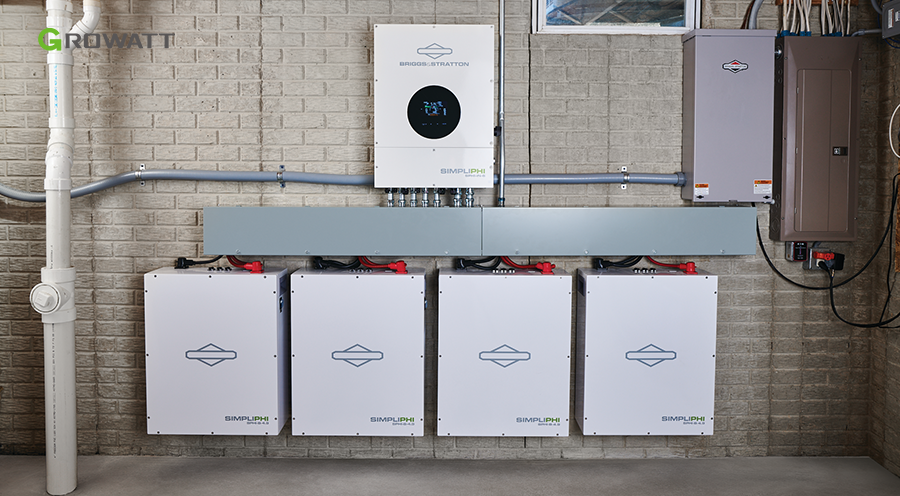
Step 2: Positioning and Mounting the Solar Inverter
-
Choosing the Right Location:
-
The inverter should be installed in a cool, dry, and well-ventilated area away from direct sunlight.
-
The location should be near the solar panels and close to the electrical panel for easier wiring.
-
-
Mounting the Inverter:
-
Use the mounting brackets to attach the inverter to a solid wall.
-
Leave enough space around the inverter for ventilation (around 6 inches on all sides).
-
Check the manufacturer’s guidelines for the inverter to ensure it is installed at the recommended height and orientation.
-
Tip:
-
It’s advisable to mount the inverter at an easily accessible height for future maintenance.
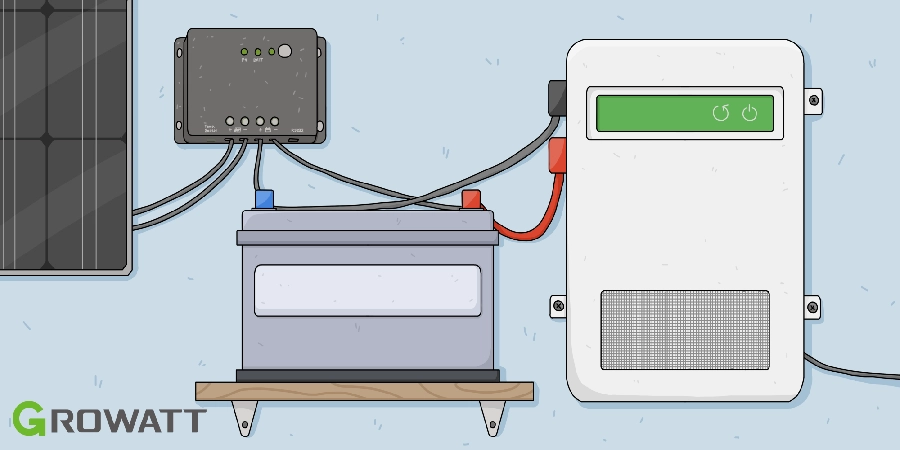
Step 3: Wiring the Solar Panels to the Inverter
-
Connecting DC Wires:
-
Begin by connecting the positive and negative DC wires from the solar panels to the inverter. The positive (red) wire from the panels goes to the positive terminal of the inverter, and the negative (black) wire goes to the negative terminal.
-
Make sure the DC cables are of the correct gauge as recommended by the inverter manufacturer.
-
-
Install a DC Disconnect Switch:
-
Install a DC disconnect switch between the solar panel array and the inverter. This switch will allow you to disconnect the panels from the inverter for maintenance or repairs.
-
Tip:
-
Using proper cable connectors is important to ensure a secure and tight connection.
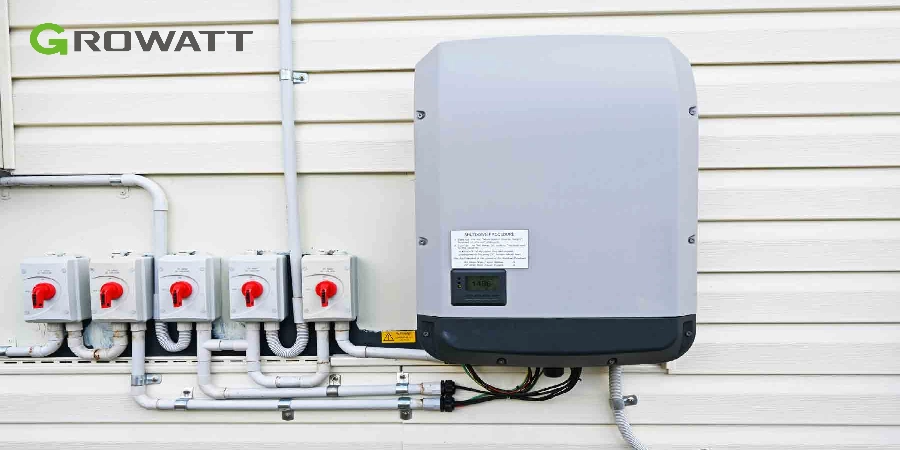
Step 4: Connecting the Inverter to the AC Panel
-
Turn Off the AC Breaker:
-
Turn off the main AC breaker in your home’s electrical panel to avoid electrical shock when working with the AC system.
-
-
AC Wiring:
-
Connect the AC output terminals of the inverter to your home’s electrical panel.
-
You’ll need to connect the live (hot) wire, neutral wire, and ground wire to the corresponding terminals in the electrical panel.
-
-
Install an AC Breaker:
-
Install an AC breaker in your electrical panel for the inverter circuit to ensure protection against overloads or short circuits.
-
Tip:
-
Double-check the AC output wire size to ensure it matches the specifications of the inverter’s output.
Step 5: Grounding the Inverter
-
Ground the Inverter:
-
It is important to ground the inverter to avoid electric shock risks. Use a grounding wire to connect the inverter’s ground terminal to the grounding system of your building.
-
-
Check the Grounding:
-
Use a multimeter to verify that the system is properly grounded and there is no leakage current.
-
Step 6: Powering Up and Testing the Inverter
-
Double-Check All Connections:
-
Inspect all connections carefully to ensure everything is properly secured. Make sure there are no exposed wires or loose connections.
-
-
Turn On the DC Disconnect Switch:
-
First, turn on the DC disconnect to allow the solar panels to send power to the inverter.
-
-
Turn On the Inverter:
-
Power on the inverter. Most modern inverters come with a display screen that shows the operational status of the system, including DC input and AC output.
-
Check the display to make sure the inverter is receiving input from the solar panels and supplying power to your electrical system.
-
-
Turn On the AC Breaker:
-
Finally, switch on the AC breaker in your home’s electrical panel. The inverter should now be supplying AC power to your household appliances.
-
Step 7: Final Checks and Monitoring
-
Monitor the Inverter Display:
-
After powering up the system, monitor the inverter’s display to ensure that it is functioning correctly. You should see the DC input from the solar panels and AC output being provided to your home.
-
-
Test the System:
-
Check that your appliances and lights are receiving power. Ensure the system is performing optimally.
-
-
Setup Monitoring (Optional):
-
Many modern inverters come with remote monitoring options. If your inverter has this feature, set it up to track the system’s performance over time.
-
Tip:
-
Many inverters also have a wifi or Bluetooth connection that allows you to monitor performance remotely via an app or web portal.Troubleshooting Tips:
-
No Output from the Inverter:
-
Ensure the inverter is turned on.
-
Check if the DC input from the solar panels is connected correctly.
-
Inspect all wiring connections for any loose wires or faults.
-
-
Error Codes on the Inverter:
-
If your inverter displays an error code, refer to the user manual for troubleshooting steps.
-
Some common issues include overvoltage, undervoltage, or overheating.
-
Conclusion
Installing a solar inverter for a DIY solar panel system is a challenging yet achievable task. By following this detailed guide, you can successfully install your inverter and start benefiting from solar power. Remember to take safety seriously, double-check connections, and monitor the system after installation to ensure everything is working smoothly.
If at any point you feel unsure about any step or encounter issues, it’s always wise to consult a professional to avoid any risks or mistakes. Once your system is installed and functioning, you’ll enjoy the long-term benefits of renewable energy, lower electricity bills, and contribute to a more sustainable future.
Where Are Best Places to Install a Solar Inverter ?
When discussing establishing solar inverters and solar energy systems, one of the first questions that comes to mind is the concept of where is the best Places to Install a Solar Inverter. The answer to this question can also affect the device’s warranty as well as efficiency. Here in this article, we are going to introduce you to the best place solar inverter where to install.
5 of the Best Places to Install a Solar Inverter
The debate is on: Solar inverter installed inside or outside?
1- In garage:
While garages and sheds provide shelter from the weather and are often close to the main electrical panel for simpler wiring, good ventilation is crucial to avoid overheating. So, garages are the Best Places to Install a Solar Inverter.
2- The Attic:
Attic installation, can be a choice for new builds with well-ventilated attics. Attics provide weather protection, easy access, and potentially cooler temperatures (extending inverter lifespan) compared to other locations. However, proper ventilation is vital. This can be achieved through fans, vents, or strategic openings to ensure enough air circulation and prevent overheating.
3- Exterior Wall:
One of the Best Places to Install a Solar Inverter is exterior walls. Exterior walls offer a viable alternative for inverter placement, especially if you lack a garage or attic. This location provides easy access for monitoring and maintenance. However, ensure the inverter receives protection from direct sunlight and rain. You can achieve this by installing a shading device or a dedicated shelter.
4- In A Utility Room:
Utility rooms, are main candidates for inverter installation place. Their proximity to the electrical panel simplifies wiring, and good ventilation in these spaces helps extend the inverter’s lifespan. Remember to ensure adequate space for maintenance and monitor access during installation. Proper ventilation is vital to prevent overheating, achievable through ventilation fans, vents, or strategic openings for air circulation.
5- Separate Utility Cabinet:
For houses with extensive electrical circuits, a standalone utility cabinet offers a solution. This option isolates the inverter from living areas and provides weather protection. This is ideal if you need to prevent overloading your main electrical panel.
Factors that effect on the Best Places to Install a Solar Inverter
As said before, many factors affect the location of the solar inverter, some of which are listed below
1. Installing the solar inverter inside or outside
The solar inverter is one of the most important components of the solar energy system. So even though the grid-tied inverters are best suited for outdoor usage, you can also install them indoors as well. As for the off-grid inverters, the choice can vary based on different factors.
In general, solar inverters are designed to be installed outdoors. They are typically mounted on a wall or on a pole near the solar array to minimize the length of the DC wiring and maximize energy production. Outdoor installation allows for better ventilation, which helps prevent the inverter from overheating. Additionally, outdoor installation provides easy access for maintenance and troubleshooting.
However, in some cases, it may be necessary or more practical to install the inverter indoors. Indoor installation can protect the inverter from extreme weather conditions, theft, or vandalism. It also allows users to have easier monitoring and maintenance in case of issues. Ultimately, the decision of whether to install the inverter indoors or outdoors will depend on factors such as available space, local climate conditions, and personal preferences.
2. Cable Distance from the Solar Panels
one of the imppportant factor effects on chossing the best places to Install a Solar Inverter is cable distance. The distance between the panels and the inverter plays an important part in the efficiency and effectiveness of the solar energy system. When the cable distance is too long, there can be a large amount of loss of power due to a voltage drop. This is because the longer the distance, the higher the resistance in the cable, leading to a decrease in the amount of electricity that can be transmitted from the panels to the inverter. As a result, it is important to minimize the cable distance in order to maximize the energy output of the system.
In terms of the installation location of the inverter, it is advisable to place it as close to the solar panels as possible. This helps to minimize the cable distance and reduce the chance of power loss. By installing the inverter near the panels, the electricity that has been generated using the solar panels can be converted and used more efficiently, leading to a higher overall energy output. Additionally, having the inverter nearby makes it easier for maintenance and monitoring purposes, as it is more accessible for technicians and homeowners.
On the other hand, if the inverter is installed too far away from the panels, it can result in complications and inefficiencies in the system. Apart from the potential power loss due to long cable distances, there may also be issues with connectivity and communication between the inverter and the panels. Furthermore, additional costs may be incurred for longer cables and installation processes, making it less cost-effective in the long run. Therefore, it is essential to carefully consider the cable distance from the panels when determining the optimal location for the solar inverter installation. The seamless growatt on grid inverter installation improve the performance of solar power system, ensuring a reliable and sustainable energy source.
3. Safety measures
The selection of an appropriate location for a solar inverter installation is crucial for ensuring safety and efficient functioning. One of the main factors you need to consider when you are determining the installation location is to make sure that it is free from potential hazards like water exposure, heat sources, dust, and debris. Installing the inverter in a safe location can help you prevent incidents such as short circuits, fires, and other hazardous situations that can be caused because of environmental factors.
In addition to that, the safety of the installation location can also impact the overall performance and lifespan of the solar inverter. Installing the solar inverter in a secure and well-ventilated area can help prevent the device from overheating and damage, ultimately prolonging the lifespan of the equipment. A safe installation location can also reduce the risk of maintenance issues down the line, as the inverter will be less susceptible to damage from external factors like extreme weather conditions.
Moreover, choosing a safe location for the solar inverter installation can also impact the overall safety of the building or property. Properly installing the inverter in a secure location can help you prevent electrical hazards and fire risks, protect the occupants of the building, and reduce the potential for accidents. By prioritizing safety in the selection of the installation location, property owners can ensure the long-term functionality and safety of their solar energy system. this is one the most important factor effects on choosing the best places to Install a Solar Inverter
4. Maintenance & Environmental considerations
The location of a solar inverter installation plays an important role in its maintenance and overall effectiveness. One of the main key effects of maintenance on the location of a solar inverter is its exposure to environmental factors. For example, if the inverter is installed in a location that has high humidity, extreme temperatures, or excessive dust, it may need more frequent maintenance to ensure optimal performance. On the other hand, placing the inverter in a well-ventilated, shade-free area can help reduce the risk of overheating and minimize maintenance check-up needs.
Additionally, the accessibility of the installation location can also greatly impact the ease of maintenance for the solar inverter. Inverters that are difficult to access or located in hard-to-reach areas may need more time and effort for routine maintenance and troubleshooting. On the other hand, installing the inverter in a convenient and accessible location can make it easier for maintenance technicians to perform regular inspections, repairs, and upgrades efficiently.
Lastly, proper maintenance, including regular cleaning, inspections, and repairs, can be helpful in order to extend the lifespan of the inverter and ensure the system continues to operate efficiently. Consequently, selecting a suitable location for solar inverter installation and implementing a proactive maintenance plan is very important in maximizing the performance and longevity of the whole system. If there is any question about Growatt off grid inverter installation, call us.
Cost of Solar Inverter Installation: Factors, Time, and Expenses
The cost of installing a solar inverter depends on several key factors, which can vary depending on the type of inverter, the complexity of installation, and other considerations. Below is a breakdown of the factors affecting the installation cost, as well as the time required for installation.
Factors Affecting the Cost of Solar Inverter Installation
-
Inverter Capacity
-
The higher the inverter’s capacity (e.g., 3kW, 5kW, 10kW), the higher the installation cost. Larger capacity inverters are typically used for more extensive solar systems and may require additional components or specialized installation.
-
-
Type of Inverter
-
Different types of inverters (string inverters, microinverters, hybrid inverters, etc.) come with different price points and installation requirements. Hybrid inverters, for example, may cost more due to their dual functionality of both solar energy and energy storage management.
-
-
Installation Complexity
-
The complexity of the installation site plays a significant role in the cost. If the inverter needs to be installed in a difficult-to-reach location, additional labor may be required, increasing the cost. Also, custom installations may require extra components like wiring, mounting brackets, or other hardware.
-
-
Location and Labor Costs
-
Costs can vary by location due to differences in local labor rates, permits, and regulations. Areas with higher labor costs or stricter building codes might see increased installation expenses.
-
-
Additional Components
-
Inverters often require additional equipment, such as circuit breakers, fuses, or monitoring systems. These extras can contribute to the overall cost.
-
-
Warranty and Maintenance
-
Some solar inverter installations include maintenance plans and warranties, which can increase the upfront cost but offer long-term benefits. Extended warranties or maintenance packages are often offered for peace of mind and to ensure the inverter’s longevity.
-
-
Energy Storage System (Optional)
-
If the solar system includes an energy storage solution like batteries, the cost of installing the inverter can be higher due to the need for additional components and more complex wiring.
-
Estimated Installation Time
-
Standard Installation: Typically, the installation of a solar inverter can take 4-8 hours for a residential system, depending on the complexity of the site and the size of the system.
-
Complex Installation: In cases where the system requires a more complex setup, such as integrating with energy storage or an off-grid system, installation may take 1-2 days.
| Factor | Description | Estimated Cost Range |
|---|---|---|
| Inverter Capacity | The larger the inverter, the higher the cost. | $500 – $2,500+ |
| Type of Inverter | Hybrid, string, or microinverters have different costs. | $500 – $3,000+ |
| Installation Complexity | Difficult installations (e.g., hard-to-reach places, custom setups). | $200 – $1,500+ |
| Labor and Location Costs | Vary by region and local labor rates. | $150 – $1,000+ |
| Additional Components | Includes circuit breakers, fuses, and other hardware. | $50 – $500 |
| Warranty & Maintenance Plans | Extended warranty and service agreements. | $100 – $500+ |
| Energy Storage (Optional) | Installation of battery systems in addition to the inverter. | $1,000 – $8,000+ |


